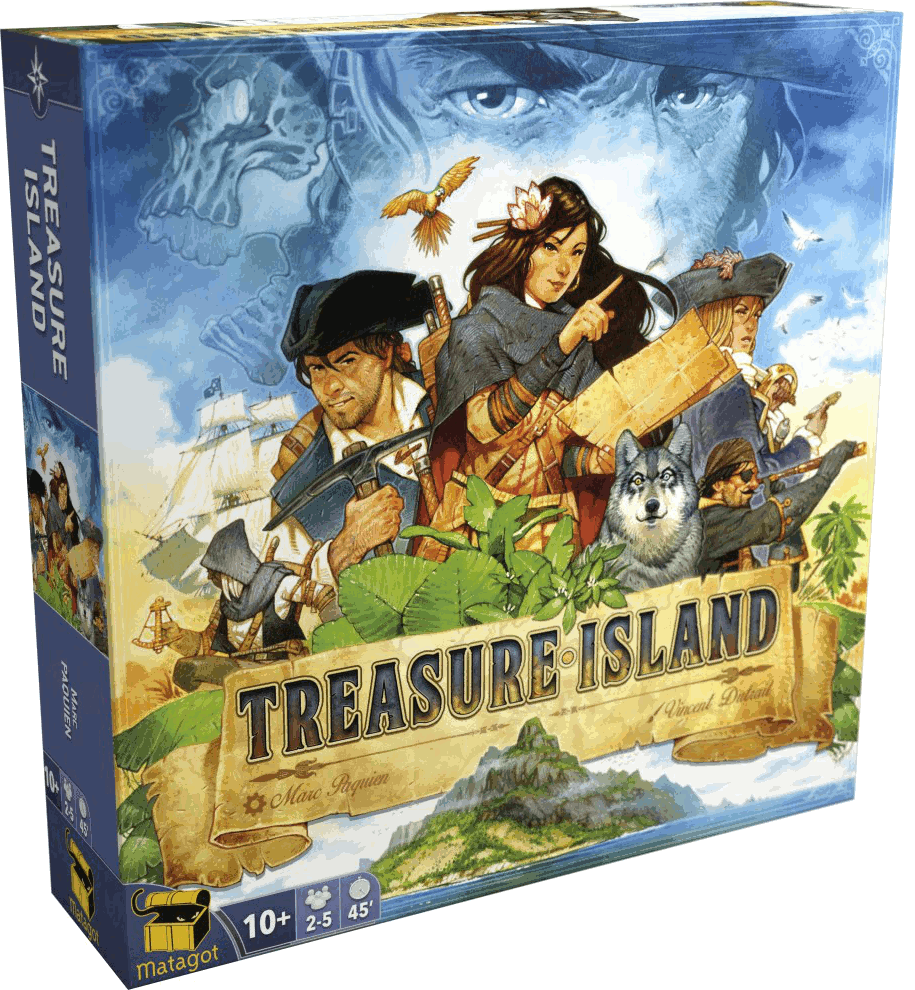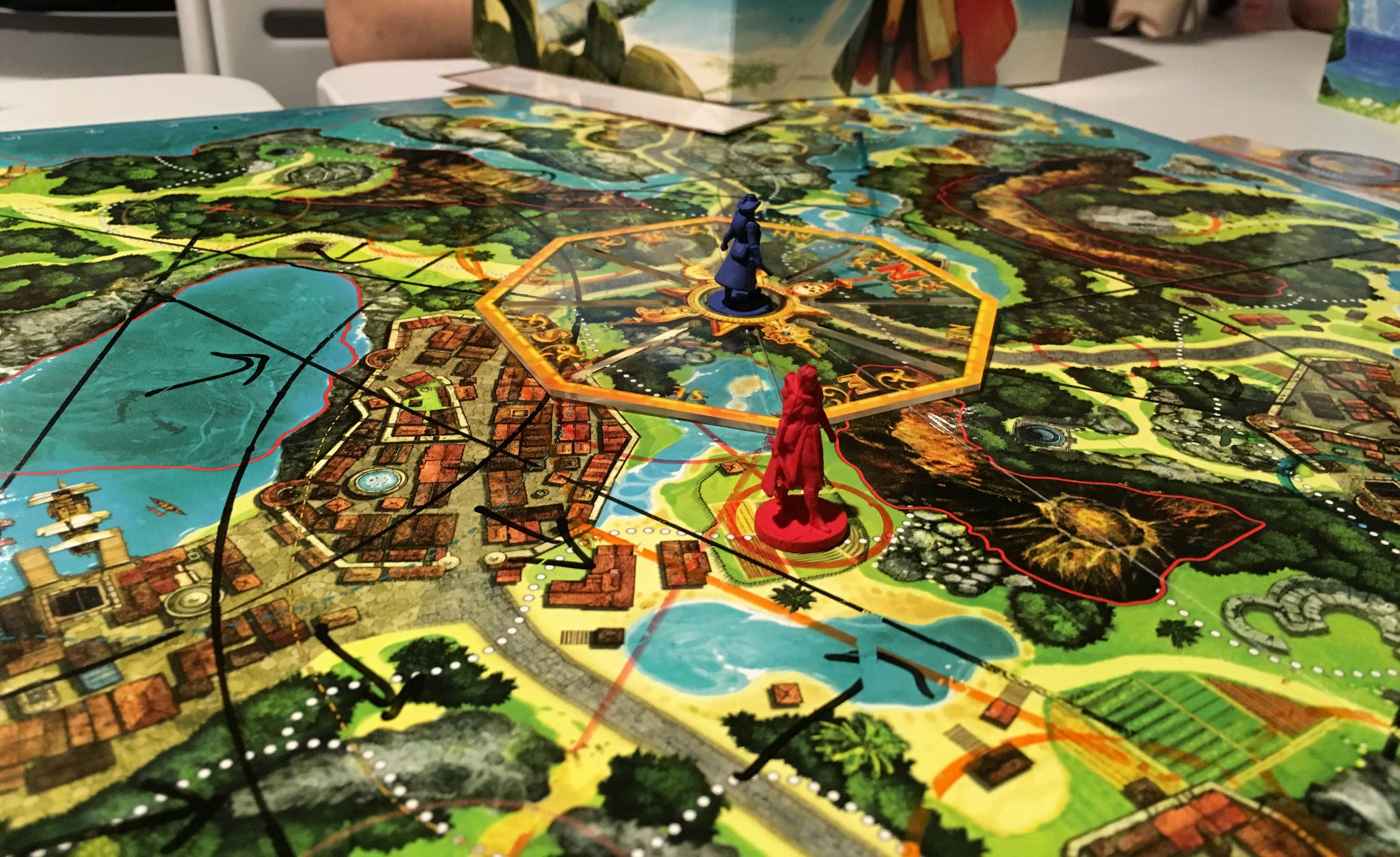
Treasure Island
Published 2018 by Matagot
Publisher's Site
Based on the classic work that every educated person should be familiar with, Muppet Treasure Island, this game pits Long John Silver against a motley collection of scurvy sea-dogs in a race around the titular island to find the titular treasure.
One player is Long John Silver, who starts the game by secretly selecting the spot on the map where he helped bury the treasure. Then he is promptly jailed by the rest of the players who proceed to move around the landscape and dig parts of it up with impunity.
Every few turns, Silver is forced to give up a clue to the location by playing a hint card, most of which rule out certain sections of the map. These hints are public knowledge but the other pirates can also extract private information from Silver using special actions. Only one pirate can find the treasure, so information is jealously guarded. Also, Silver can sometimes lie (he is a pirate, after all) so not everything can be trusted.
Eventually Silver escapes and joins the other pirates in a race to the burial site with the huge advantage that he knows exactly where it is. It gets quite chaotic.
Treasure Island has to lot of recommend it. The components are of unusually high quality - not only do you get a fantastic map (just look at it!), but also a large wooden protractor and several plastic pieces to add in charting your course. There is also a cardboard treasure chest and wax seals. The only thing that is missing is a set of eyepatches for everyone to wear.

Movement is completely freeform - pirates move up to a certain number of inches in any direction and perform searches by tracing circles directly onto the map. Silver also marks out his hints by tracing them onto the main board using the drafting tools supplied. It feels a lot like orienteering and by the end of the game the map is covered in crisscrossed lines and arcs.
In this way, Treasure Island manages to strongly invoke the feeling of mutually-untrusting pirates hunched over an old treasure map. The game encourages table-talk and the game gets wonderfully tense as players hone in on the secret spot.
It seems remarkably balanced. In both games I have played, Silver eventually won but only by a fraction of an inch. The player playing Silver definitely has the most interesting (and difficult) task; playing as one of the other pirates starts off fairly randomly but soon turns into a game of who keeps the best records on the secret mini-map issued to each player at the beginning.
If there is one flaw in Treasure Island then it is that the game is a little fiddly to play. The board gets crowded with markings and using some of tools means moving stuff out of the way and then moving it back.

You need a fairly big table to make it work well, each player has a screen and stuff to hide behind it and it can get crowded with all the components strewn about. Also some of the dry-erase markers that the game depends on are not opaque enough to effectively show up on the map. But these are minor quibbles that don't effect the fun and its hard to complain when there is so much stuff in the box to play with.
The box says that a game takes 45 minutes. I haven't found that to be the case, each game took over an hour but that included a lot of table talk. It certainly didn't drag and there is very little downtime. I've only played it with the maximum five players and I suspect that this gives the most enjoyment although the rules go all the way down to a two player game.
The bottom line is that Treasure Island is a great game to pull out for a group of five. Usually games are not rated on how piraty they are but if they were then Treasure Island would rank very highly indeed.
Now if you excuse me, I need to buy some eyepatches.